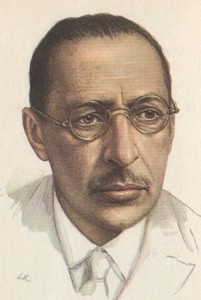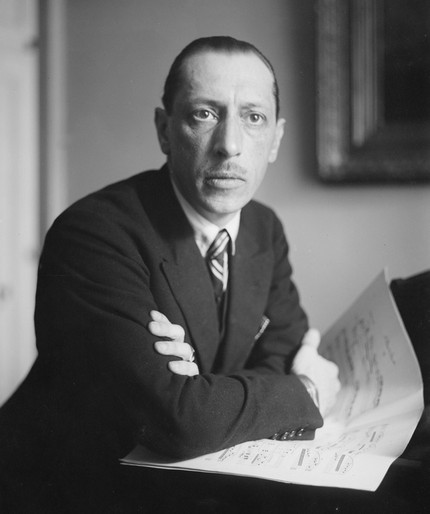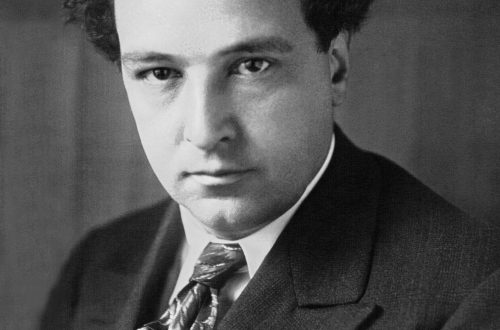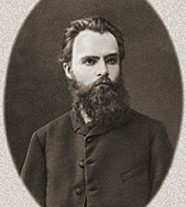
Igor Fyodorovich Stravinsky |
Igor stravinsky
…I was born at the wrong time. By temperament and inclination, like Bach, although on a different scale, I should live in obscurity and create regularly for the established service and God. I survived in the world I was born into… I survived… despite publisher huckstering, music festivals, advertising… I. Stravinsky
… Stravinsky is a truly Russian composer … The Russian spirit is indestructible in the heart of this truly great, multifaceted talent, born of the Russian land and vitally connected with it … D. Shostakovich

The creative life of I. Stravinsky is a living history of the music of the 1959th century. It, like in a mirror, reflects the processes of development of contemporary art, inquisitively looking for new ways. Stravinsky earned a reputation as a daring subverter of tradition. In his music, a plurality of styles arise, constantly intersecting and sometimes difficult to classify, for which the composer earned the nickname “man with a thousand faces” from his contemporaries. He is like the Magician from his ballet “Petrushka”: he freely moves genres, forms, styles on his creative stage, as if subordinating them to the rules of his own game. Arguing that “music can only express itself,” Stravinsky nevertheless strove to live “con Tempo” (that is, along with time). In “Dialogues”, published in 63-1945, he recalls the street noises in St. Petersburg, the Maslenitsa festivities on the Field of Mars, which, according to him, helped him see his Petrushka. And the composer spoke of the Symphony in Three Movements (XNUMX) as a work connected with concrete impressions of the war, with memories of the atrocities of the Brownshirts in Munich, of which he himself almost became a victim.
Stravinsky’s universalism is striking. It manifests itself in the breadth of coverage of the phenomena of world musical culture, in the variety of creative searches, in the intensity of the performing – pianistic and conductor – activity, which lasted more than 40 years. The scale of his personal contacts with outstanding people is unprecedented. N. Rimsky-Korsakov, A. Lyadov, A. Glazunov, V. Stasov, S. Diaghilev, artists of the “World of Art”, A. Matisse, P. Picasso, R. Rolland. T. Mann, A. Gide, C. Chaplin, K. Debussy, M. Ravel, A. Schoenberg, P. Hindemith, M. de Falla, G. Faure, E. Satie, the French composers of the Six group – these are the names some of them. Throughout his life, Stravinsky was in the center of public attention, at the crossroads of the most important artistic paths. The geography of his life covers many countries.
Stravinsky spent his childhood in St. Petersburg, where, according to him, “it was excitingly interesting to live.” Parents did not seek to give him the profession of a musician, but the whole situation was conducive to musical development. The house constantly sounded music (the father of the composer F. Stravinsky was a famous singer of the Mariinsky Theater), there was a large art and music library. From childhood, Stravinsky was fascinated by Russian music. As a ten-year-old boy, he was lucky to see P. Tchaikovsky, whom he idolized, dedicating to him many years later the opera Mavra (1922) and the ballet The Fairy’s Kiss (1928). Stravinsky called M. Glinka “the hero of my childhood”. He highly appreciated M. Mussorgsky, considered him “the most truthful” and claimed that in his own writings there are influences of “Boris Godunov”. Friendly relations arose with members of the Belyaevsky circle, especially with Rimsky-Korsakov and Glazunov.
Stravinsky’s literary interests formed early. The first real event for him was the book of L. Tolstoy “Childhood, adolescence, youth”, A. Pushkin and F. Dostoevsky remained idols throughout his life.
Music lessons began at the age of 9. It was piano lessons. However, Stravinsky began serious professional studies only after 1902, when, as a student at the law faculty of St. Petersburg University, he began to study with Rimsky-Korsakov. At the same time, he became close with S. Diaghilev, the artists of the “World of Art”, attended the “Evenings of Modern Music”, concerts of new music, arranged by A. Siloti. All this served as an impetus for rapid artistic maturation. Stravinsky’s first composing experiments – the Piano Sonata (1904), the Faun and the Shepherdess vocal and symphonic suite (1906), the Symphony in E flat major (1907), the Fantastic Scherzo and Fireworks for orchestra (1908) are marked by the influence of the school Rimsky-Korsakov and the French Impressionists. However, from the moment the ballets The Firebird (1910), Petrushka (1911), The Rite of Spring (1913), commissioned by Diaghilev for the Russian Seasons, were staged in Paris, there has been a colossal creative take-off in the genre that Stravinsky in He was especially fond of later on because, in his words, ballet is “the only form of theatrical art that puts the tasks of beauty and nothing more as a cornerstone.”

The triad of ballets opens the first – “Russian” – period of creativity, named so not for the place of residence (since 1910, Stravinsky lived abroad for a long time, and in 1914 settled in Switzerland), but thanks to the peculiarities of musical thinking that appeared at that time, deeply essentially national. Stravinsky turned to Russian folklore, the various layers of which were refracted in a very peculiar way in the music of each of the ballets. The Firebird impresses with its exuberant generosity of orchestral colors, bright contrasts of poetic round dance lyrics and fiery dances. In “Petrushka”, called by A. Benois “ballet mule”, city melodies, popular at the beginning of the century, sound, the noisy motley picture of the Shrovetide festivities comes to life, which is opposed by the lonely figure of the suffering Petrushka. The ancient pagan rite of sacrifice determined the content of the “Sacred Spring”, which embodied the elemental impulse for spring renewal, the mighty forces of destruction and creation. The composer, plunging into the depths of folklore archaism, so radically renews the musical language and images that the ballet made the impression of an exploding bomb on his contemporaries. “Giant lighthouse of the XX century” called it the Italian composer A. Casella.
During these years, Stravinsky composed intensively, often working on several works that were completely different in character and style at once. These were, for example, the Russian choreographic scenes The Wedding (1914-23), which in some way echoed The Rite of Spring, and the exquisitely lyrical opera The Nightingale (1914). The Tale about the Fox, the Rooster, the Cat and the Sheep, which revives the traditions of the buffoon theater (1917), is adjacent to The Story of a Soldier (1918), where Russian melos is already beginning to be neutralized, falling into the sphere of constructivism and jazz elements.
In 1920 Stravinsky moved to France and in 1934 he took French citizenship. It was a period of extremely rich creative and performing activity. For the younger generation of French composers, Stravinsky became the highest authority, the “musical master”. However, the failure of his candidacy for the French Academy of Fine Arts (1936), the ever-strengthening business ties with the United States, where he twice successfully gave concerts, and in 1939 delivered a course of lectures on aesthetics at Harvard University – all this prompted him to move at the beginning of the second world war in America. He settled in Hollywood (California) and in 1945 accepted American citizenship.
The beginning of the “Parisian” period for Stravinsky coincided with a sharp turn towards neoclassicism, although on the whole the overall picture of his work was rather variegated. Starting with the ballet Pulcinella (1920) to the music of G. Pergolesi, he created a whole series of works in the neoclassical style: the ballets Apollo Musagete (1928), Playing Cards (1936), Orpheus (1947); the opera-oratorio Oedipus Rex (1927); the melodrama Persephone (1938); the opera The Rake’s Progress (1951); Octet for Winds (1923), Symphony of Psalms (1930), Concerto for Violin and Orchestra (1931) and others. Stravinsky’s neoclassicism has a universal character. The composer models various musical styles of the epoch of J. B. Lully, J. S. Bach, K. V. Gluck, aiming to establish “the dominance of order over chaos.” This is characteristic of Stravinsky, who was always distinguished by his striving for a strict rational discipline of creativity, which did not allow emotional overflows. Yes, and the very process of composing music Stravinsky carried out not on a whim, but “daily, regularly, like a person with official time.”
It was these qualities that determined the peculiarity of the next stage of creative evolution. In the 50-60s. the composer plunges into the music of the pre-Bach era, turns to biblical, cult plots, and from 1953 begins to apply a rigidly constructive dodecaphonic composing technique. Sacred Hymn in Honor of the Apostle Mark (1955), ballet Agon (1957), Gesualdo di Venosa’s 400th Anniversary Monument for orchestra (1960), cantata-allegory The Flood in the spirit of the English mysteries of the 1962th century. (1966), Requiem (“Chants for the Dead”, XNUMX) – these are the most significant works of this time.
Stravinsky’s style in them becomes more and more ascetic, constructively neutral, although the composer himself speaks of the preservation of national origins in his work: “I have been speaking Russian all my life, I have a Russian style. Maybe in my music this is not immediately visible, but it is inherent in it, it is in its hidden nature. One of Stravinsky’s last compositions was a canon on the theme of the Russian song “Not the Pine at the Gates Swayed”, which was used earlier in the finale of the ballet “Firebird”.
Thus, completing his life and creative path, the composer returned to the origins, to music that personified the distant Russian past, the longing for which was always present somewhere in the depths of the heart, sometimes breaking through in statements, and especially intensified after Stravinsky’s visit to the Soviet Union in the autumn of 1962. It was then that he uttered the significant words: “A person has one place of birth, one homeland – and the place of birth is the main factor in his life.”
O. Averyanova
- List of major works by Stravinsky →





